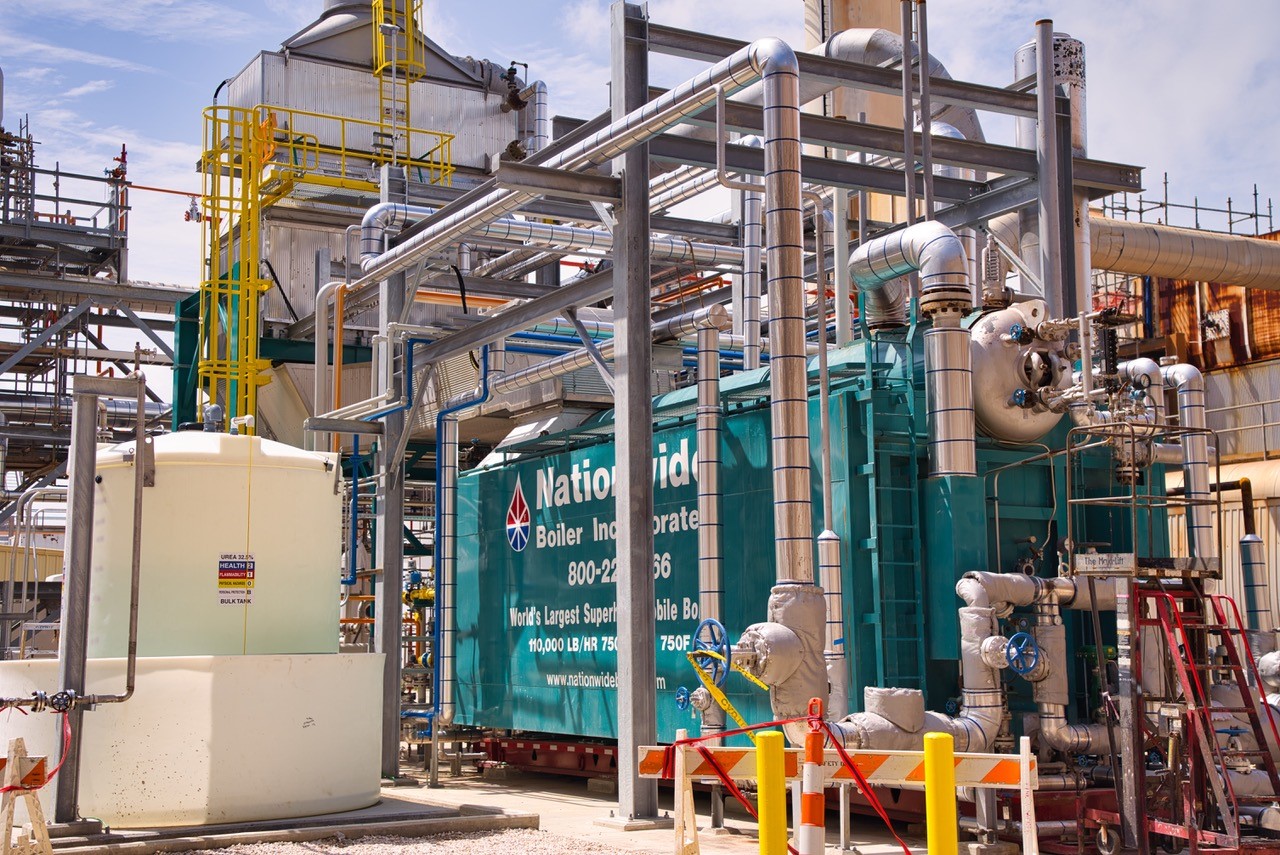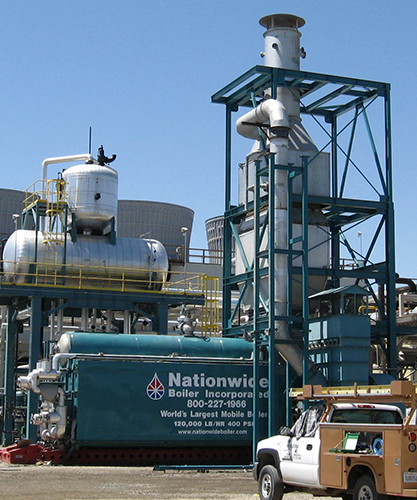Industrial facilities in Oregon and Washington now have a new edge in reliable steam supply. We are excited to share that Nationwide Boiler has expanded our exclusive territory and are now the sole representative for Babcock & Wilcox (B&W) package watertube boilers for customers in Oregon and Washington State. With decades of experience serving industrial customers and a reputation built on integrity and dependability, this expansion brings trusted B&W products, technical expertise, and rapid support to the Pacific Northwest.
Delivering Flexible, Reliable Boiler Solutions
As companies across Oregon and Washington face evolving capacity and compliance challenges, Nationwide Boiler is poised to deliver the same high-quality boiler equipment and service known throughout California, Nevada, and beyond.
With our expanded territory, industrial facilities in Oregon and Washington now gain direct
access to new, custom-engineered B&W boilers, supported by Nationwide Boiler’s technical expertise from initial design and project planning to installation and commissioning. This capability ensures facilities can secure tailored steam solutions that meet specific capacity, efficiency, and compliance requirements.
Comprehensive Product Offerings and Support
Custom-engineered boilers, especially large package watertube units, can carry manufacturing lead times of up to 54 weeks—posing risks for facilities that need immediate capacity. Through our exclusive representation of Babcock & Wilcox (B&W) in California, Washington, Oregon, and select Nevada counties, Nationwide Boiler provides customers with access to both built-to-spec boiler solutions and a robust in-stock boiler inventory to bridge the gap.
For urgent requirements, Nationwide Boiler maintains a wide range of in-stock B&W package watertube boilers, available for domestic and global shipment. This includes the 200,000 lb/hr, 750 psig / 750 °F superheated steam “World Boiler,” a B&W model FM120-124 package boiler,engineered for rapid deployment to minimize downtime and keep operations running.
Customers in the Pacific Northwest and beyond benefit from:
- Rapid access to new and used in-stock firetube and watertube boilers up to 270,000 lb/hr
- Expedited shipping worldwide, ideal for unexpected equipment failures or planned capital projects. In-stock package watertube boilers range from 50,000 lb/hr to 200,000 lb/hr
- Comprehensive support including engineering packages, technical documentation, and ongoing service.
- Application-specific consultation to match each facility's unique operational needs, such as fuel efficient economizers, SCR systems for ultra-low NOx and CO compliance, and advanced boiler control systems.
Meeting Urgent Steam Needs and Minimizing Downtime
In addition to permanent boiler sales, Nationwide Boiler provides one of the largest, most
reliable rental fleets in the industry, supporting customers when unexpected downtime, peak
demands, or planned outages occur.
With rental boilers ranging from 47.5 hp firetube boilers to 200,000 lb/hr watertube boilers, customers in Oregon, Washington, and across the globe gain flexible options for both short- and long-term needs.
Our rental solutions include:
- Trailer-mounted package watertube boilers, with an extensive inventory of B&W 75,000 lb/hr superheat steam boilers
- Complete mobile steam plant systems including boiler/burner package, feedwater system, water softener, chemical feeder, and blowdown separator
- Stand-alone auxiliary equipment options such as mobile feedwater vans and water softeners, blowdown separators, and gas regulators
- Add-on auxiliary equipment options such as economizers, CataStak™ SCR systems, and DataStak remote monitoring systems
- Expert guidance navigating regional code requirements, emissions regulations, and site- specific installation logistics.
- Hands-on local support from experienced sales engineers based in California, Washington, Texas, and various other locations across the globe.
Nationwide Boiler’s rental fleet ensures fast response, compliance-ready solutions, and minimized downtime for facilities worldwide.
Decades of Dependability: Tracing the Nationwide Boiler–B&W Partnership
For more than 150 years, Babcock & Wilcox (B&W) has set the standard in steam generation, pioneering safe, reliable watertube boiler technology used in industries worldwide. Nationwide Boiler has been a long-lasting B&W partner for decades, bringing proven technology and reliable boiler solutions to customers across the world.
By combining B&W’s engineering expertise with our own experience in system integration, rentals, and emissions solutions, we’ve been able to deliver dependable temporary and permanent boiler solutions backed by hands-on support. With this new territory expansion, businesses in Oregon and Washington now gain the same direct access to B&W boilers, along with the technical guidance and responsive service Nationwide Boiler is known for.
Industrial Boiler Solutions for the Pacific Northwest and Beyond
As an exclusive representative of Babcock & Wilcox in California, Washington, Oregon, and select counties of Nevada, Nationwide Boiler continues to deliver industrial progress with proven technology, in-stock availability, and responsive support. Companies in Oregon and Washington now have direct access to custom-engineered boilers, immediate inventory, and expert engineering services – helping reduce lead times, control costs, and maintain operational continuity.
Whether you need a built-to-spec solution, an in-stock boiler for expedited shipment, or a rental unit to meet urgent steam demands, Nationwide Boiler is your trusted partner in the Pacific Northwest and beyond.
Contact our team today for fast quotes, emergency steam solutions, or to learn more about how this expansion can benefit your facility.



 udly offers the world’s largest high pressure mobile steam boilers for industrial applications: the 150,000 pph saturated steam boiler and the 110,000 pph superheated Steam boiler, both trailer-mounted for unmatched mobility and rapid deployment. These high-capacity rental boilers set the industry standards for performance, flexibility, and reliability, delivering robust steam output for the most demanding industries.
udly offers the world’s largest high pressure mobile steam boilers for industrial applications: the 150,000 pph saturated steam boiler and the 110,000 pph superheated Steam boiler, both trailer-mounted for unmatched mobility and rapid deployment. These high-capacity rental boilers set the industry standards for performance, flexibility, and reliability, delivering robust steam output for the most demanding industries. nsuring seamless setup and compliance with ASME, FM, NFPA 85, and GE GAP Insurance Standards. Additionally, boilers are weatherproofed (except for freezing conditions) and come with comprehensive operating manuals.
nsuring seamless setup and compliance with ASME, FM, NFPA 85, and GE GAP Insurance Standards. Additionally, boilers are weatherproofed (except for freezing conditions) and come with comprehensive operating manuals.